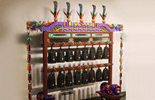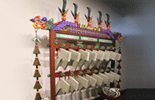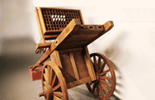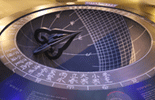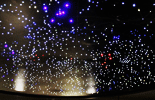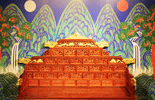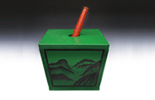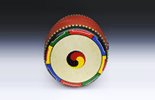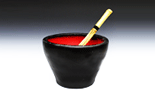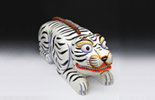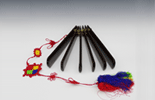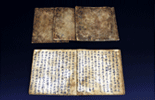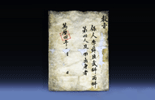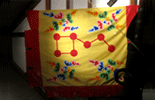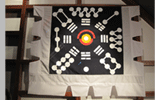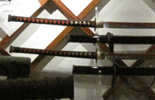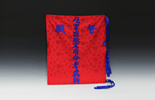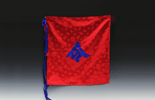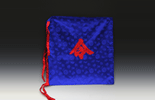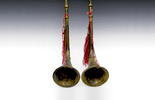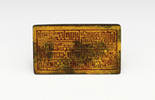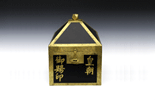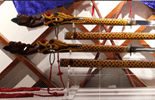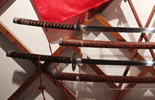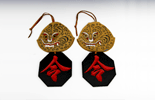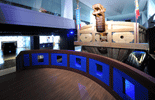

-
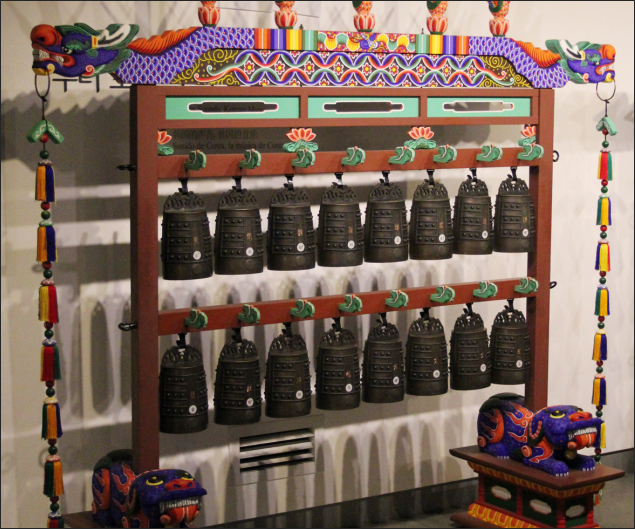 01
Pyeonjong
Pyeonjong is an indefinite pitched percussion instrument made of iron, which was imported from Song Dynasty in the 11th year(1116) of Yejong’s rule during the Koryeo period and was used as an instrument for palace ritual music. In the 11th year(1429) of Sejong’s rule, a Jujongso (bell plant) was made and they started to produce their own instrument.
01
Pyeonjong
Pyeonjong is an indefinite pitched percussion instrument made of iron, which was imported from Song Dynasty in the 11th year(1116) of Yejong’s rule during the Koryeo period and was used as an instrument for palace ritual music. In the 11th year(1429) of Sejong’s rule, a Jujongso (bell plant) was made and they started to produce their own instrument.
It is played by hanging 16 bells on two levels of wooden frames. The sound is high when the bell is thick, and low when the bell is thin.



-
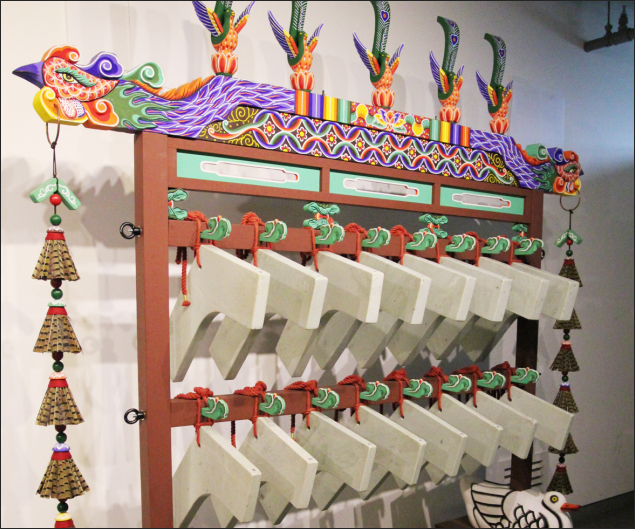 02
Pyeongyeong
Pyeongyeong is an indefinite pitched percussion instrument made of stone, which was imported from the Song Dynasty in the 11th year(1116) of Yejong’s rule during the Koryeo period and was used as an instrument for palace ritual music. Later during the 7th year(1425) of Sejong’s rule in Joseon Dynasty, pumice stone was found in Gyeonggi-do Namyang and the instrument began to be made domestically.
02
Pyeongyeong
Pyeongyeong is an indefinite pitched percussion instrument made of stone, which was imported from the Song Dynasty in the 11th year(1116) of Yejong’s rule during the Koryeo period and was used as an instrument for palace ritual music. Later during the 7th year(1425) of Sejong’s rule in Joseon Dynasty, pumice stone was found in Gyeonggi-do Namyang and the instrument began to be made domestically.
It is played by hanging 16 ‘ㄱ’ shaped stones on two levels of wooden frames. The sound is high when the stone is thick, and low when the stone is thin.



-
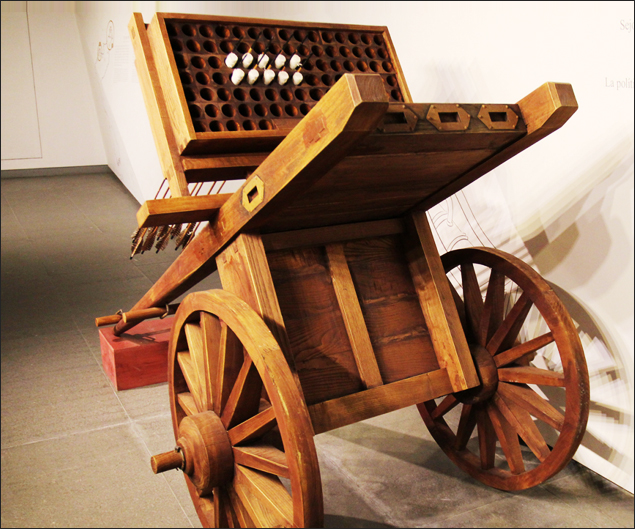 03
Singijeon
Singijeon is a rocket powered arrow that was made in the 30th year(1448) of Sejong’s rule, which was the first multi-firing rocket weapon in the world. As it is written in 『Book Byeonggi doseol』(The Illustrated Account of weapons), Singijeon was used as a secret weapon along with The Turtle Ship during the Japanese Invasion of Korea in 1592.
03
Singijeon
Singijeon is a rocket powered arrow that was made in the 30th year(1448) of Sejong’s rule, which was the first multi-firing rocket weapon in the world. As it is written in 『Book Byeonggi doseol』(The Illustrated Account of weapons), Singijeon was used as a secret weapon along with The Turtle Ship during the Japanese Invasion of Korea in 1592.



-
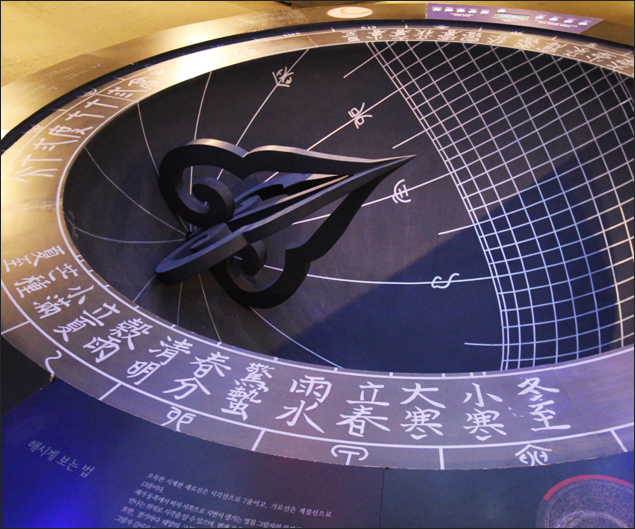 04
Angbuilgu
04
Angbuilgu
a sundial
Angbuilgu(a sundial) meaning ‘a sundial in the shape of holding up a cauldron,’ is also named as a Concave Sundial as it has a concaved bottom.
This clock is made by using the principle of the clock hand’s change in shadow position according to the movement of the Sun.
The Concave Sundial can said to be scientific because it shows seasons and time together by including horizontal lines that represent the seasons and vertical lines that represent time.



-
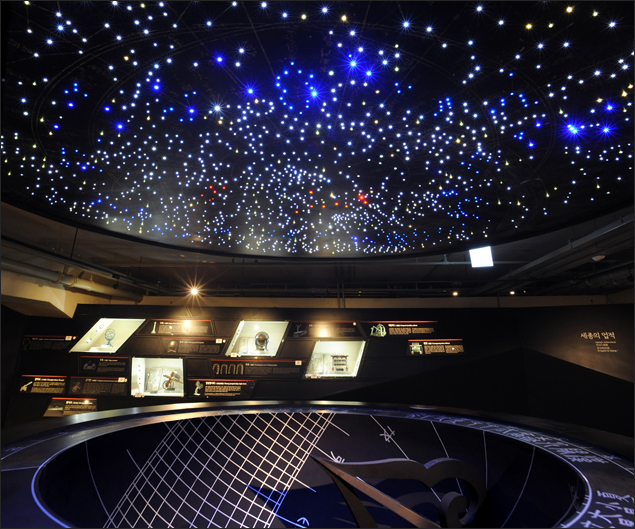 05
Cheonsang Yeolcha
05
Cheonsang Yeolcha
Bunyajido
This astronomical chart is based on the Seokgakbon(astronomical chart engraved in stone), which is the oldest form of astronomical chart from the Taejo period. In the round sky, there are total of 1400 stars and 282 constellations.
This kind of detailed and amazing astronomical chart was able to be created because our ancestors had much interest in the sun, moon, and stars. Our ancestor’s agrarian society, especially, required prediction of weather by looking at the sky and their interest in astronomy was important, because they had to forecast by looking at the sun, moon, and stars.



-
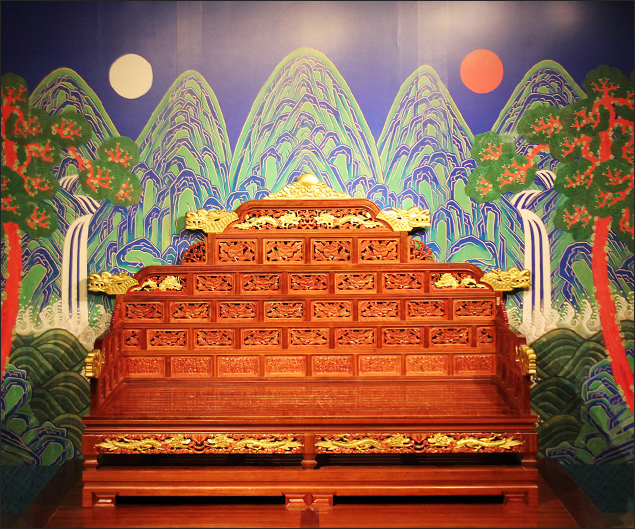 06
Eojwa, Ilwolohbongbyeong
Eojwa is a Korean word for the royal throne.
06
Eojwa, Ilwolohbongbyeong
Eojwa is a Korean word for the royal throne.
Our ancestors always placed the Ilwolohbongbyeong behind the Eojwa. Ilwolohbongbyeong is a name of a painting, also called Ilweolohakdo and Ilweolgonryundo, that was on a large folding screen with the subject content of the sun, moon, five mountain peaks, waves, and pine trees.



-
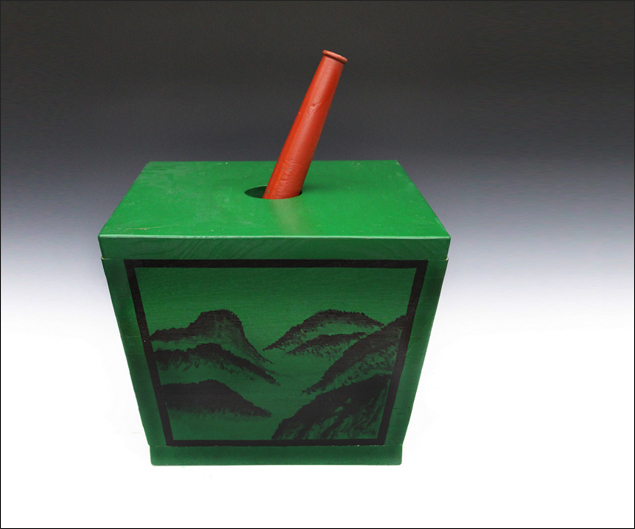 07
Chuk
Chuk is a percussion instrument that sounded the beginning of music.
07
Chuk
Chuk is a percussion instrument that sounded the beginning of music.
This instrument has a box-like body with a hole on top of the box and it is played by hitting the inside with a hammer.
The shape of the hammer and the hitting method is slightly different according to the period.
The exterior of the body is decorated with landscape painting.



-
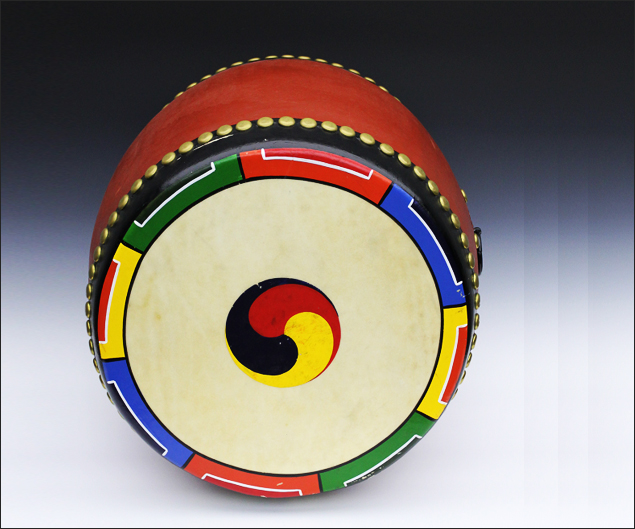 08
Jeolgo
This instrument belongs to the Hyeokbu classification of the Korean classical instruments.
08
Jeolgo
This instrument belongs to the Hyeokbu classification of the Korean classical instruments.
Being a type of a drum, it is placed on a wooden box-like stand and is played by hitting it with a wooden stick.
In the Akhakgwebeom(illustrated text on traditional music), it is written that “Jeolgo isn’t only used to sound the beginning and the end of music but played during the music which is similar to the playing of Jingo(percussion instrument) during Heonga(royal ancestral rites music).”



-
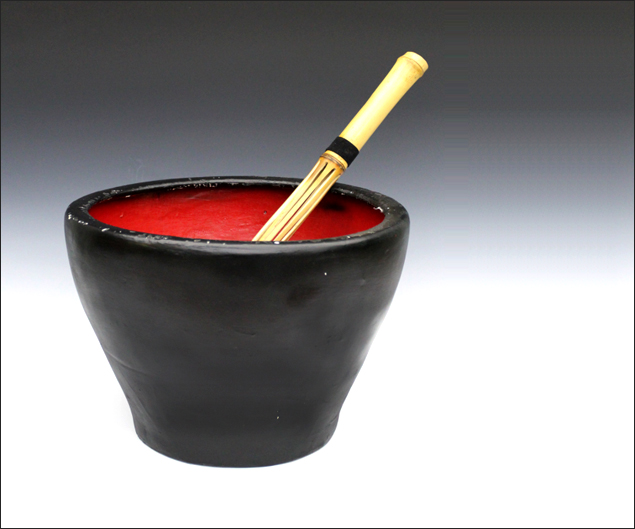 09
Bu
Bu is a percussion instrument that is made from baked soil.
09
Bu
Bu is a percussion instrument that is made from baked soil.
It is played by hitting the outer rims with a bamboo stick that is split into nine pieces.
Bu takes on the role of a rhythmical instrument by keeping time with the middle Maebak(type of beat) in the court music.



-
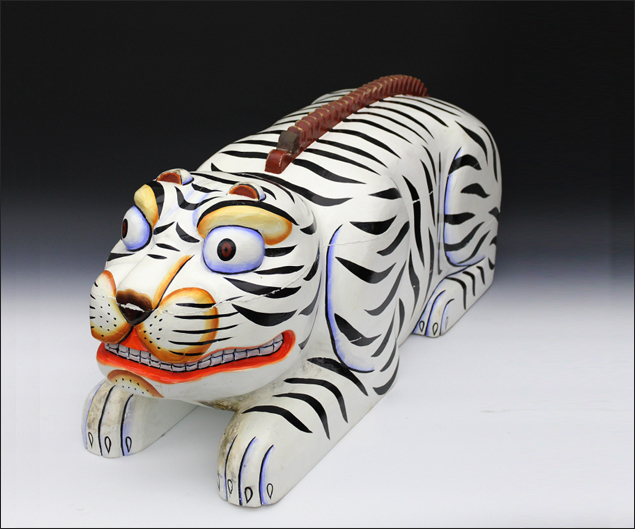 10
Eo
This percussion instrument is used to sound the end of music and has the shape of a tiger with 27 saw tooth along its spine.
10
Eo
This percussion instrument is used to sound the end of music and has the shape of a tiger with 27 saw tooth along its spine.
It is played by hitting the back of its neck three times with a stick, followed by 3 consecutive scrapes of the saw teeth on the spine.



-
 11
Bak
Bak has been used since the period of Three Kingdoms of Korea.
11
Bak
Bak has been used since the period of Three Kingdoms of Korea.
In the past, Bak was used to direct the beginning and end of music or to count the musical section by hitting it once every beat.
But, today, it is hit once at the beginning of music and three times at the end.



-
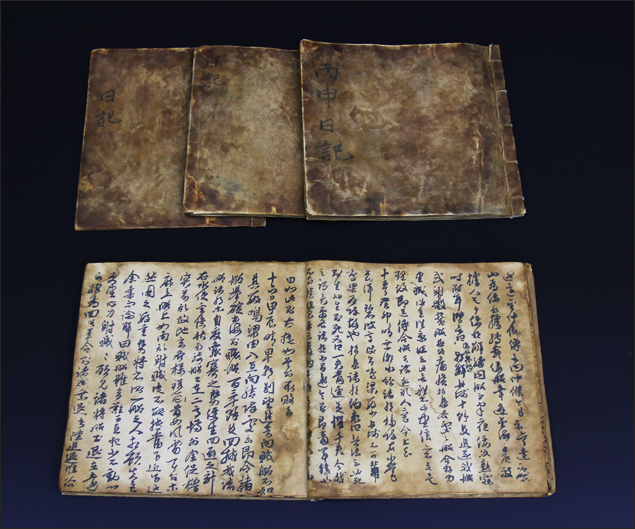 01
Nanjung Ilgi
This is Admiral Yi’s 7 year war diary that was written in the midst of the Japanese Invasion of Korea.
01
Nanjung Ilgi
This is Admiral Yi’s 7 year war diary that was written in the midst of the Japanese Invasion of Korea.
The term Nanjung Ilgi wasn’t coined by Admiral Yi, but was termed by the editors who compiled the Yichungmugongjeonseo(collection of Admiral Yi’s works) by collecting Admiral Yi related archives during the rule of Jeongjo.
This is the one and only personal diary that was declared as national treasure.
Place of collection: Hyunchungsa (National Treasure No. 76)



-
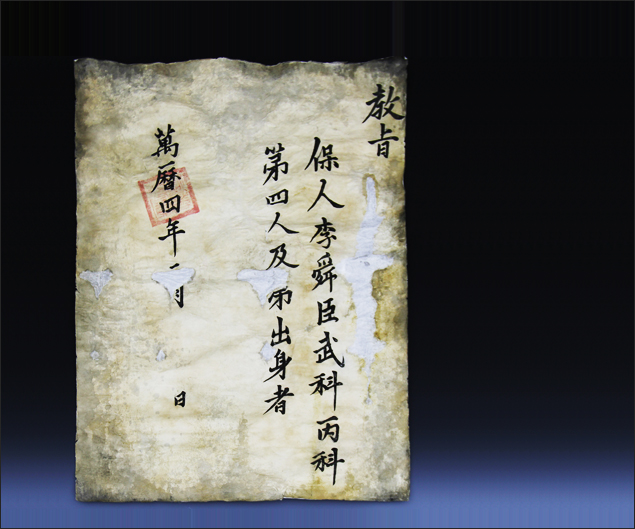 02
Mugwageupjegyoji
02
Mugwageupjegyoji
(Certificate for passing the military exam)
This is an official royal decree document of Admiral Yi’s pass in military service examination in March 1576, and can said to be a kind of an official certificate.
Place of collection: Hyunchungsa



-
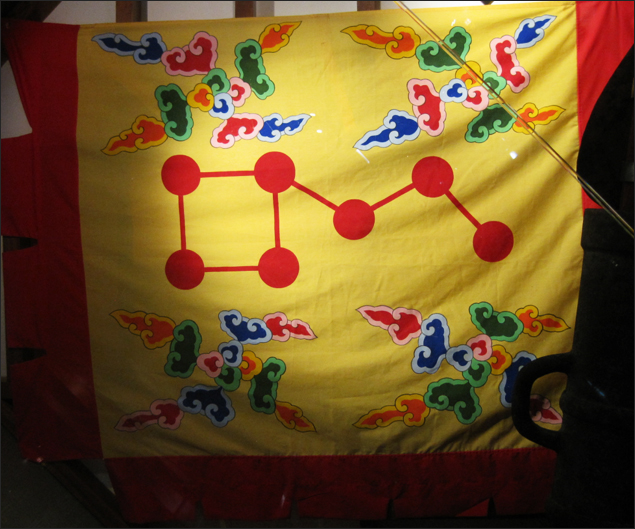 03
Choyogi
This is a military flag that was used by the commander of the army to direct the generals during war marching.
03
Choyogi
This is a military flag that was used by the commander of the army to direct the generals during war marching.
It uniquely has the big dipper on the flag. The big dipper has been thought to rule the universe and since been one of the constellations revered by Koreans.
The 7th star of the big dipper is thought to be the star that enforces the rules of the heavens, and it is called ‘Yogwanseong,’ which carries the meaning that it is able to defeat any enemy.



-
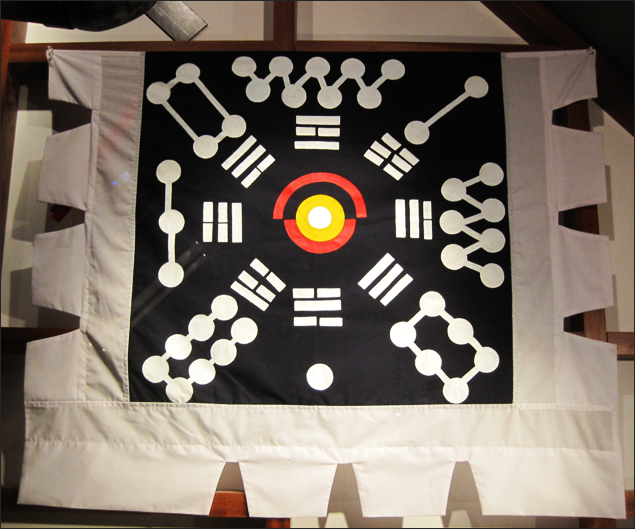 04
Jwadokgi
This military flag is placed behind the commander of the army during marching and placed to the front-left of the commander’s stand when the army is stationary.
04
Jwadokgi
This military flag is placed behind the commander of the army during marching and placed to the front-left of the commander’s stand when the army is stationary.
The rectangular flag with black background has the Taiji mark in the middle symbolizing yin-yang and ideology, where the surrounding consists of writing or drawing that symbolizes a specific person, and also a drawing of posterior Eight Trigrams for divination.



-
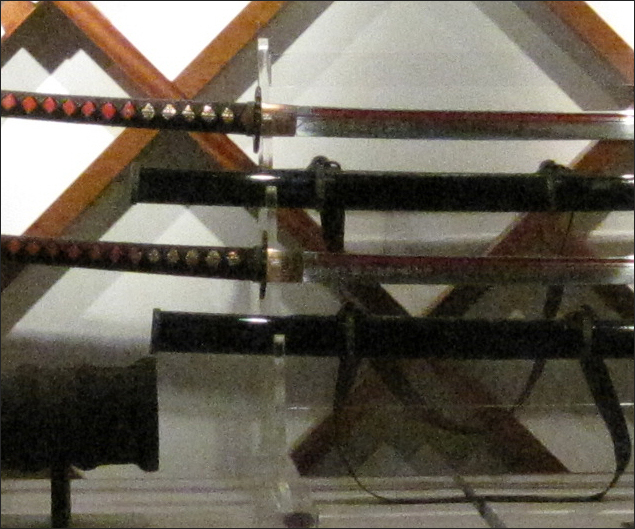 05
Sword (Janggeom)
This long sword was produced when Admiral Yi was in Hansan Island, where he hung this sword on the wall and looked upon it to meditate.
05
Sword (Janggeom)
This long sword was produced when Admiral Yi was in Hansan Island, where he hung this sword on the wall and looked upon it to meditate.
On one sword it says '三尺誓天 山河動色(The mountains and the rivers trembled as I took out my long sword and made an oath in heaven),’ and the other sword says'一揮掃蕩 血染山河(the land was soaked in blood as I swept the land with one swing of my sword.)’ On the interior of the handle there is a well known phrase of '甲午四月日造太貴連李茂生(This sword was made by Taegwiryeon and Yimusaeng in April of the Gapoh year),’ which tells us that this sword was made by Taegwiryeon and Yimusaeng in April of 1594.
Place of collection: Hyeonchungsa(National Treasure No. 326)



-
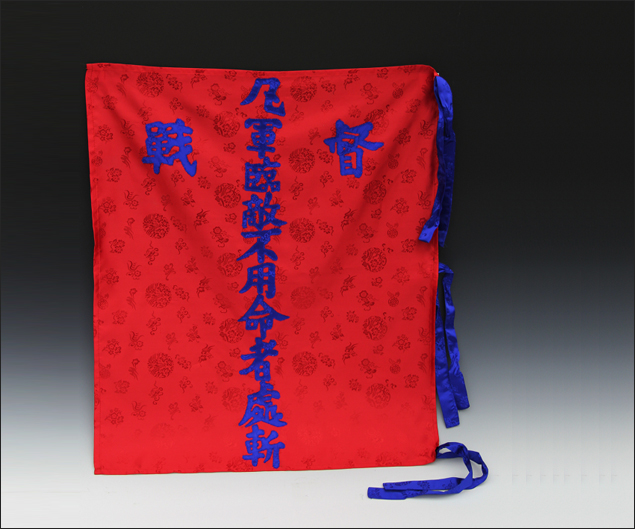 06
Dokjeongi
This is one of eight items that the Chinese emperor of the Ming Dynasty had given to Admiral Yi.
06
Dokjeongi
This is one of eight items that the Chinese emperor of the Ming Dynasty had given to Admiral Yi.
This flag was used by the commander in order to stimulate the army for battle and in the middle it says ‘As a member of this army, if you do not obey orders, you will be beheaded.’
Place of collection: Chungryeolsa (National Treasure No. 440)



-
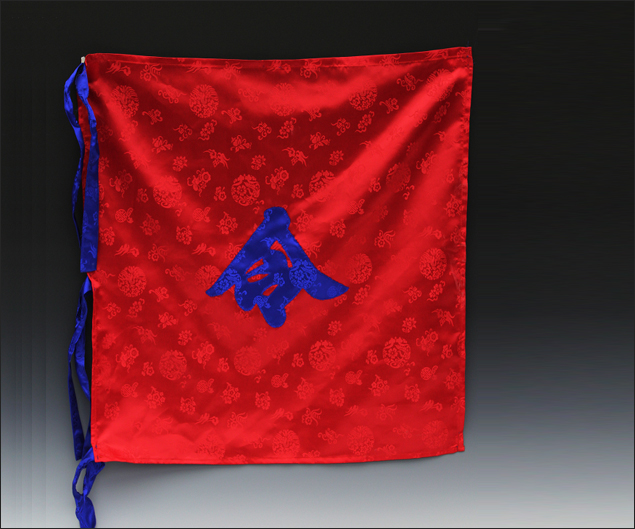 07
Hongsoryeonggi
07
Hongsoryeonggi
(Commander's flag)
This is one of eight items that the Chinese emperor of the Ming Dynasty had given to Admiral Yi. This flag was carried by the messenger when he was giving orders to a civil servant.
Place of collection: Chungryeolsa (National Treasure No. 440)



-
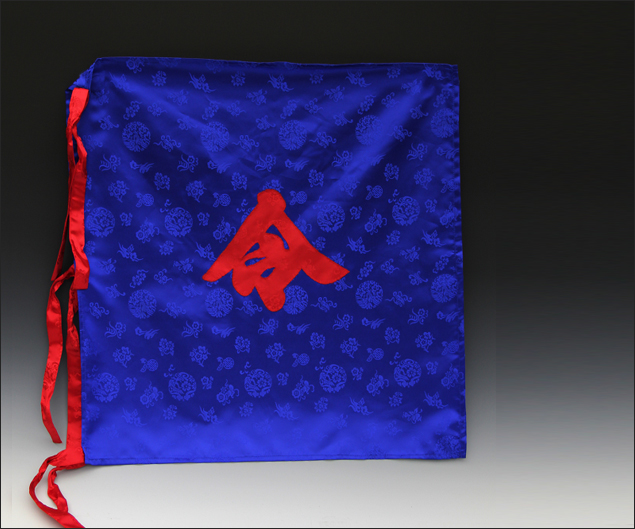 08
Namsoryeonggi
08
Namsoryeonggi
(Commander's flag)
This is one of eight items that the Chinese emperor of the Ming Dynasty had given to Admiral Yi. This flag was carried by the messenger when he was giving orders to a military officer.
Place of collection: Chungryeolsa (National Treasure No. 440)



-
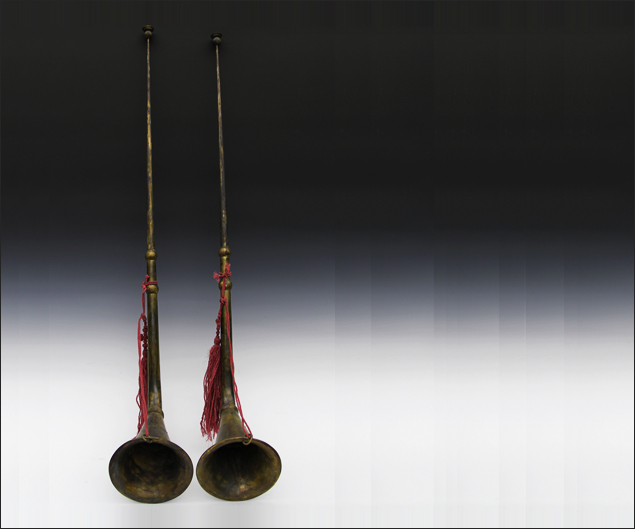 09
Goknabal
This is one of eight items that the Chinese emperor of the Ming Dynasty had given to Admiral Yi. This curved bugle was used to sound various signals during battle.
Place of collection: Chungryeolsa (National Treasure No. 440)
09
Goknabal
This is one of eight items that the Chinese emperor of the Ming Dynasty had given to Admiral Yi. This curved bugle was used to sound various signals during battle.
Place of collection: Chungryeolsa (National Treasure No. 440)



-
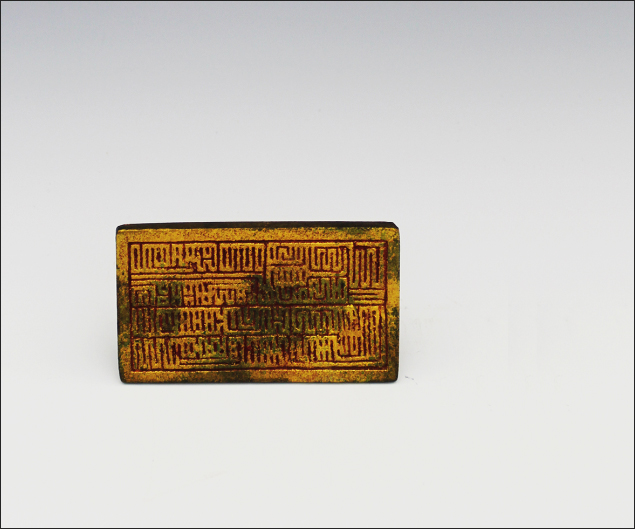 10
Dodokin
10
Dodokin
Commander’s seal
This is one of eight items that the Chinese emperor of the Ming Dynasty had given to Admiral Yi. A Gwangbangin (Type of official stamp) was made of copper and used by a naval commander.
Place of collection: Chungryeolsa (National Treasure No. 440)



-
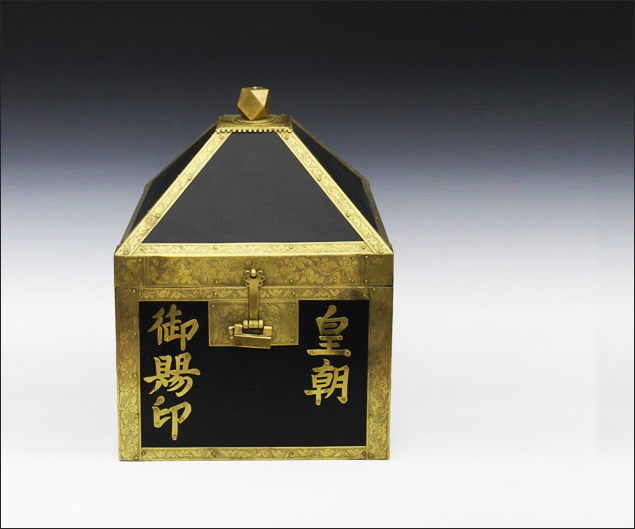 11
Dodokinham
This is one of eight items that the Chinese emperor of the Ming Dynasty had given to Admiral Yi. This was the case of the official stamp used by the naval commander.
Place of collection: Chungryeolsa (National Treasure No. 440)
11
Dodokinham
This is one of eight items that the Chinese emperor of the Ming Dynasty had given to Admiral Yi. This was the case of the official stamp used by the naval commander.
Place of collection: Chungryeolsa (National Treasure No. 440)



-
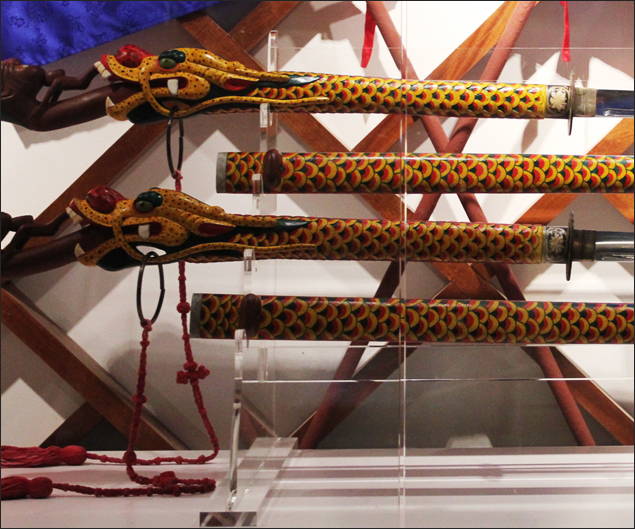 12
Gwido
This is one of eight items that the Chinese emperor of the Ming Dynasty had given to Admiral Yi. There is an engraving of a dragon’s head on the sword’s handle and a phantom to the bottom of it. The sheath is expressed as dragons scale. This sword was used to repel evil spirits for self-defense, and the title was coined because the handle is said to look like a phantom.
Place of collection: Chungryeolsa (National Treasure No. 440)
12
Gwido
This is one of eight items that the Chinese emperor of the Ming Dynasty had given to Admiral Yi. There is an engraving of a dragon’s head on the sword’s handle and a phantom to the bottom of it. The sheath is expressed as dragons scale. This sword was used to repel evil spirits for self-defense, and the title was coined because the handle is said to look like a phantom.
Place of collection: Chungryeolsa (National Treasure No. 440)



-
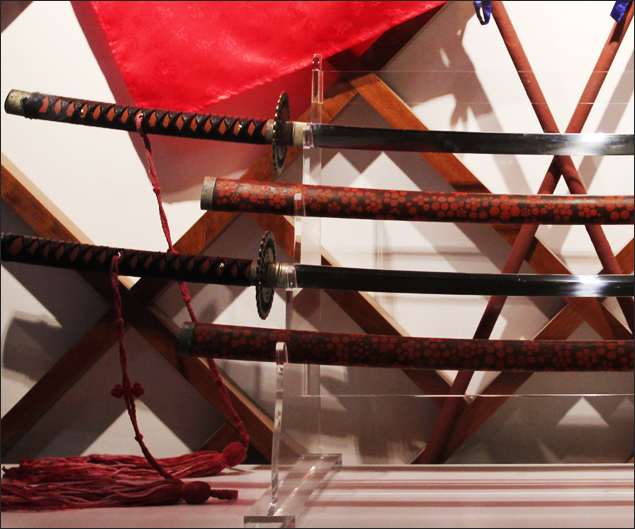 13
Chamdo
This is one of eight items that the Chinese emperor of the Ming Dynasty had given to Admiral Yi. This sword was used to decapitate a person that committed a high sin.
Place of collection: Chungryeolsa (National Treasure No. 440)
13
Chamdo
This is one of eight items that the Chinese emperor of the Ming Dynasty had given to Admiral Yi. This sword was used to decapitate a person that committed a high sin.
Place of collection: Chungryeolsa (National Treasure No. 440)



-
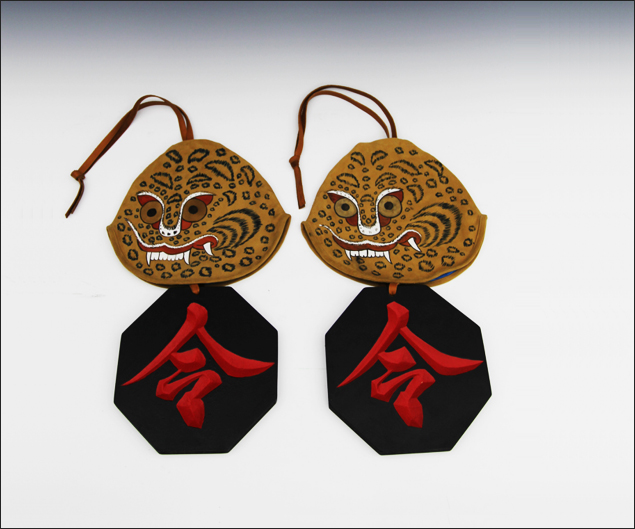 14
Hoduryeongpae
This is one of eight items that the Chinese emperor of the Ming Dynasty had given to Admiral Yi. This 8 sided wooden piece has 令(Order) engraved on one side and 大將(Leader) on another side. This seal of order was worn on the shoulder when relaying orders or was used to capture a criminal.
Place of collection: Chungryeolsa (National Treasure No. 440)
14
Hoduryeongpae
This is one of eight items that the Chinese emperor of the Ming Dynasty had given to Admiral Yi. This 8 sided wooden piece has 令(Order) engraved on one side and 大將(Leader) on another side. This seal of order was worn on the shoulder when relaying orders or was used to capture a criminal.
Place of collection: Chungryeolsa (National Treasure No. 440)



-
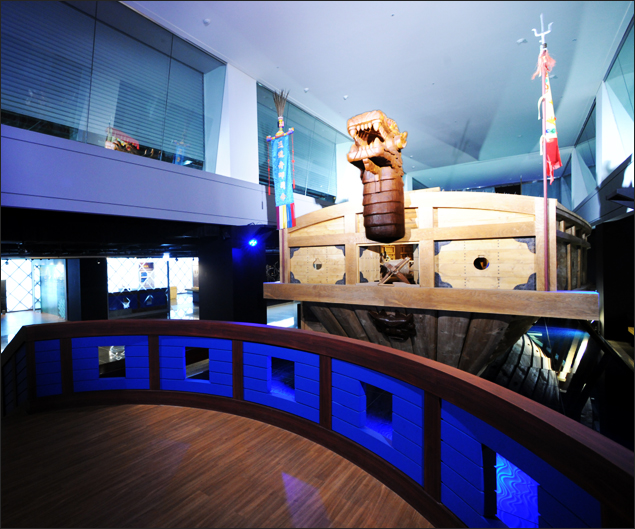 15
Geobukseon
15
Geobukseon
(the turtle ship)
The Turtle Ship was a charging capital ship, during the Josun Dynasty, based on the Panokseon(type of combat ship), and served a significant role during the Japanese Invasion of Korea 1592. This model Turtle Ship was built for visitors to experience the inside, and the interior was based on the Naval Academy’s model Turtle Ship. The size of this ship is reduced by 55% from the original size.



 01
Pyeonjong
Pyeonjong is an indefinite pitched percussion instrument made of iron, which was imported from Song Dynasty in the 11th year(1116) of Yejong’s rule during the Koryeo period and was used as an instrument for palace ritual music. In the 11th year(1429) of Sejong’s rule, a Jujongso (bell plant) was made and they started to produce their own instrument.
01
Pyeonjong
Pyeonjong is an indefinite pitched percussion instrument made of iron, which was imported from Song Dynasty in the 11th year(1116) of Yejong’s rule during the Koryeo period and was used as an instrument for palace ritual music. In the 11th year(1429) of Sejong’s rule, a Jujongso (bell plant) was made and they started to produce their own instrument. 


 02
Pyeongyeong
Pyeongyeong is an indefinite pitched percussion instrument made of stone, which was imported from the Song Dynasty in the 11th year(1116) of Yejong’s rule during the Koryeo period and was used as an instrument for palace ritual music. Later during the 7th year(1425) of Sejong’s rule in Joseon Dynasty, pumice stone was found in Gyeonggi-do Namyang and the instrument began to be made domestically.
02
Pyeongyeong
Pyeongyeong is an indefinite pitched percussion instrument made of stone, which was imported from the Song Dynasty in the 11th year(1116) of Yejong’s rule during the Koryeo period and was used as an instrument for palace ritual music. Later during the 7th year(1425) of Sejong’s rule in Joseon Dynasty, pumice stone was found in Gyeonggi-do Namyang and the instrument began to be made domestically. 


 03
Singijeon
Singijeon is a rocket powered arrow that was made in the 30th year(1448) of Sejong’s rule, which was the first multi-firing rocket weapon in the world. As it is written in 『Book Byeonggi doseol』(The Illustrated Account of weapons), Singijeon was used as a secret weapon along with The Turtle Ship during the Japanese Invasion of Korea in 1592.
03
Singijeon
Singijeon is a rocket powered arrow that was made in the 30th year(1448) of Sejong’s rule, which was the first multi-firing rocket weapon in the world. As it is written in 『Book Byeonggi doseol』(The Illustrated Account of weapons), Singijeon was used as a secret weapon along with The Turtle Ship during the Japanese Invasion of Korea in 1592.



 04
Angbuilgu
04
Angbuilgu 


 05
Cheonsang Yeolcha
05
Cheonsang Yeolcha 


 06
Eojwa, Ilwolohbongbyeong
Eojwa is a Korean word for the royal throne.
06
Eojwa, Ilwolohbongbyeong
Eojwa is a Korean word for the royal throne. 


 07
Chuk
Chuk is a percussion instrument that sounded the beginning of music.
07
Chuk
Chuk is a percussion instrument that sounded the beginning of music. 


 08
Jeolgo
This instrument belongs to the Hyeokbu classification of the Korean classical instruments.
08
Jeolgo
This instrument belongs to the Hyeokbu classification of the Korean classical instruments. 


 09
Bu
Bu is a percussion instrument that is made from baked soil.
09
Bu
Bu is a percussion instrument that is made from baked soil. 


 10
Eo
This percussion instrument is used to sound the end of music and has the shape of a tiger with 27 saw tooth along its spine.
10
Eo
This percussion instrument is used to sound the end of music and has the shape of a tiger with 27 saw tooth along its spine. 


 11
Bak
Bak has been used since the period of Three Kingdoms of Korea.
11
Bak
Bak has been used since the period of Three Kingdoms of Korea. 


 01
Nanjung Ilgi
This is Admiral Yi’s 7 year war diary that was written in the midst of the Japanese Invasion of Korea.
01
Nanjung Ilgi
This is Admiral Yi’s 7 year war diary that was written in the midst of the Japanese Invasion of Korea. 


 02
Mugwageupjegyoji
02
Mugwageupjegyoji 


 03
Choyogi
This is a military flag that was used by the commander of the army to direct the generals during war marching.
03
Choyogi
This is a military flag that was used by the commander of the army to direct the generals during war marching. 


 04
Jwadokgi
This military flag is placed behind the commander of the army during marching and placed to the front-left of the commander’s stand when the army is stationary.
04
Jwadokgi
This military flag is placed behind the commander of the army during marching and placed to the front-left of the commander’s stand when the army is stationary. 


 05
Sword (Janggeom)
This long sword was produced when Admiral Yi was in Hansan Island, where he hung this sword on the wall and looked upon it to meditate.
05
Sword (Janggeom)
This long sword was produced when Admiral Yi was in Hansan Island, where he hung this sword on the wall and looked upon it to meditate. 


 06
Dokjeongi
This is one of eight items that the Chinese emperor of the Ming Dynasty had given to Admiral Yi.
06
Dokjeongi
This is one of eight items that the Chinese emperor of the Ming Dynasty had given to Admiral Yi. 


 07
Hongsoryeonggi
07
Hongsoryeonggi 


 08
Namsoryeonggi
08
Namsoryeonggi 


 09
Goknabal
This is one of eight items that the Chinese emperor of the Ming Dynasty had given to Admiral Yi. This curved bugle was used to sound various signals during battle.
Place of collection: Chungryeolsa (National Treasure No. 440)
09
Goknabal
This is one of eight items that the Chinese emperor of the Ming Dynasty had given to Admiral Yi. This curved bugle was used to sound various signals during battle.
Place of collection: Chungryeolsa (National Treasure No. 440)



 10
Dodokin
10
Dodokin 


 11
Dodokinham
This is one of eight items that the Chinese emperor of the Ming Dynasty had given to Admiral Yi. This was the case of the official stamp used by the naval commander.
Place of collection: Chungryeolsa (National Treasure No. 440)
11
Dodokinham
This is one of eight items that the Chinese emperor of the Ming Dynasty had given to Admiral Yi. This was the case of the official stamp used by the naval commander.
Place of collection: Chungryeolsa (National Treasure No. 440)



 12
Gwido
This is one of eight items that the Chinese emperor of the Ming Dynasty had given to Admiral Yi. There is an engraving of a dragon’s head on the sword’s handle and a phantom to the bottom of it. The sheath is expressed as dragons scale. This sword was used to repel evil spirits for self-defense, and the title was coined because the handle is said to look like a phantom.
Place of collection: Chungryeolsa (National Treasure No. 440)
12
Gwido
This is one of eight items that the Chinese emperor of the Ming Dynasty had given to Admiral Yi. There is an engraving of a dragon’s head on the sword’s handle and a phantom to the bottom of it. The sheath is expressed as dragons scale. This sword was used to repel evil spirits for self-defense, and the title was coined because the handle is said to look like a phantom.
Place of collection: Chungryeolsa (National Treasure No. 440)



 13
Chamdo
This is one of eight items that the Chinese emperor of the Ming Dynasty had given to Admiral Yi. This sword was used to decapitate a person that committed a high sin.
Place of collection: Chungryeolsa (National Treasure No. 440)
13
Chamdo
This is one of eight items that the Chinese emperor of the Ming Dynasty had given to Admiral Yi. This sword was used to decapitate a person that committed a high sin.
Place of collection: Chungryeolsa (National Treasure No. 440)



 14
Hoduryeongpae
This is one of eight items that the Chinese emperor of the Ming Dynasty had given to Admiral Yi. This 8 sided wooden piece has 令(Order) engraved on one side and 大將(Leader) on another side. This seal of order was worn on the shoulder when relaying orders or was used to capture a criminal.
Place of collection: Chungryeolsa (National Treasure No. 440)
14
Hoduryeongpae
This is one of eight items that the Chinese emperor of the Ming Dynasty had given to Admiral Yi. This 8 sided wooden piece has 令(Order) engraved on one side and 大將(Leader) on another side. This seal of order was worn on the shoulder when relaying orders or was used to capture a criminal.
Place of collection: Chungryeolsa (National Treasure No. 440)



 15
Geobukseon
15
Geobukseon 





